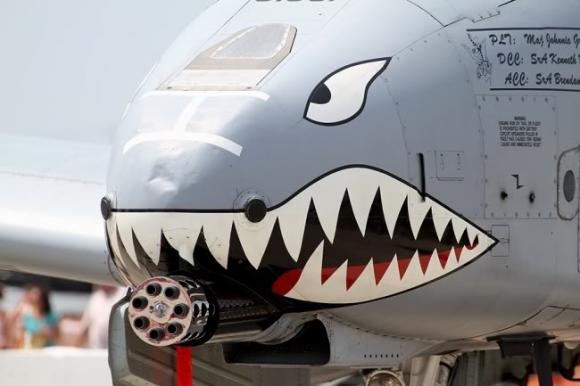The entire backup line of the A-10 has been reopened. This is what they communicate from the Air Force Materiel Command. The Warthog will remain in service indefinitely. The Pentagon has authorized the reconstruction of the entire backup capacity for the current fleet of 283 aircraft. The A-10 Warthog was built in 715 specimens. The Air Force has dismantled four A-10 squadrons from the 2012 to today, while those still in service have switched from 24 to 18 aircraft. The Pentagon deploys nine squadrons across the world in four operational theaters: South Korea, Iraq and Syria, Eastern Europe and the Philippines.
Built at the end of the 70 years, they have been redesigned to fly up to the 2028, with the next step fixed to the 2040. This data should not make the scandal shout: just think that the B-52 fleet will fly up to 2040. The Pentagon has recently invested a billion dollars in equipping the A-10 with a new cockpit, fire control system and a helmet-mounted HMD implemented on the helmet. All the wings of the A-10 have been replaced thanks to a two billion dollar contract signed with Boeing in the 2007.
The controversies on the A-10 arise from the need to free up funds to be allocated to the F-35 which, in theory, was also presented as an aircraft in the CAS role. We know it's not like that. The universal hunting project, both in terms of the components in common for the three variants and the multi-role role, has long failed officially. The Navy is developing its own specific fighter, while the Air Force presses to reopen the Raptor line. The sacrifice of the A-10 was deemed necessary to ensure the economic flow for the F-35. Unfortunately, as we have repeated several times, the F-35 tactical fighter will never perform Warthog missions and equal its historically undervalued close support capabilities. Finally, there is the atavistic diatribe between Air Force and the troops on the ground.
After the initial phase (lasting years) for the all-inclusive JSF, the Pentagon also admitted the facts, authorizing the AX program (natural substitute for A-10). GAO, the Armed Forces of the Senate and the Chamber, as well as the Congress have already expressed their binding point of view on several occasions: the A-10 does not touch.
The A-10 will remain in service until the decision of the AX program that we know provides three options: build a new Warthog, use the current assets to meet the CAS missions or extend the life of the A-10 up to 2040 / 45. Despite budgetary pressures and the need to free up resources to be allocated to the F-35 program, the Air Force in its latest budget request sets out the definitive retirement plans at 2022, proposing the withdrawal of 49 aircraft within 2018. The Congress, on the other hand, has frozen all types of A-10 retirement until the capabilities of the platform that replaces it are proven.
The lethality, survival and unique ability to provide continuous A-10 air support are unrivaled. The A-10 can fly over the battlefield for 90 minutes, while the F-35A can only remain for 20 / 30 minutes. The A-10 can shoot more than 1.170 shots, while the F-35A only has 180 bullets. The A-10 can remain in flight even after losing part of its primary systems, the F-35A can not survive a direct hit. No other Western aircraft could continue its mission under the gun fire from 23mm and against some from 57 mm. Every vital part of the A-10 is protected by armored plates. The pilot is no exception, wrapped in a titanium tank of 600 kg. It should be noted that while the A-10 was designed to operate in an operating environment of a previous era, it is still more vulnerable than other platforms to new threats.
The new CAS platform of the AX program will therefore have to be designed to guarantee close support in an environment that presents modern and stratified defense systems. The A-10, today can operate only in permissive environments.












